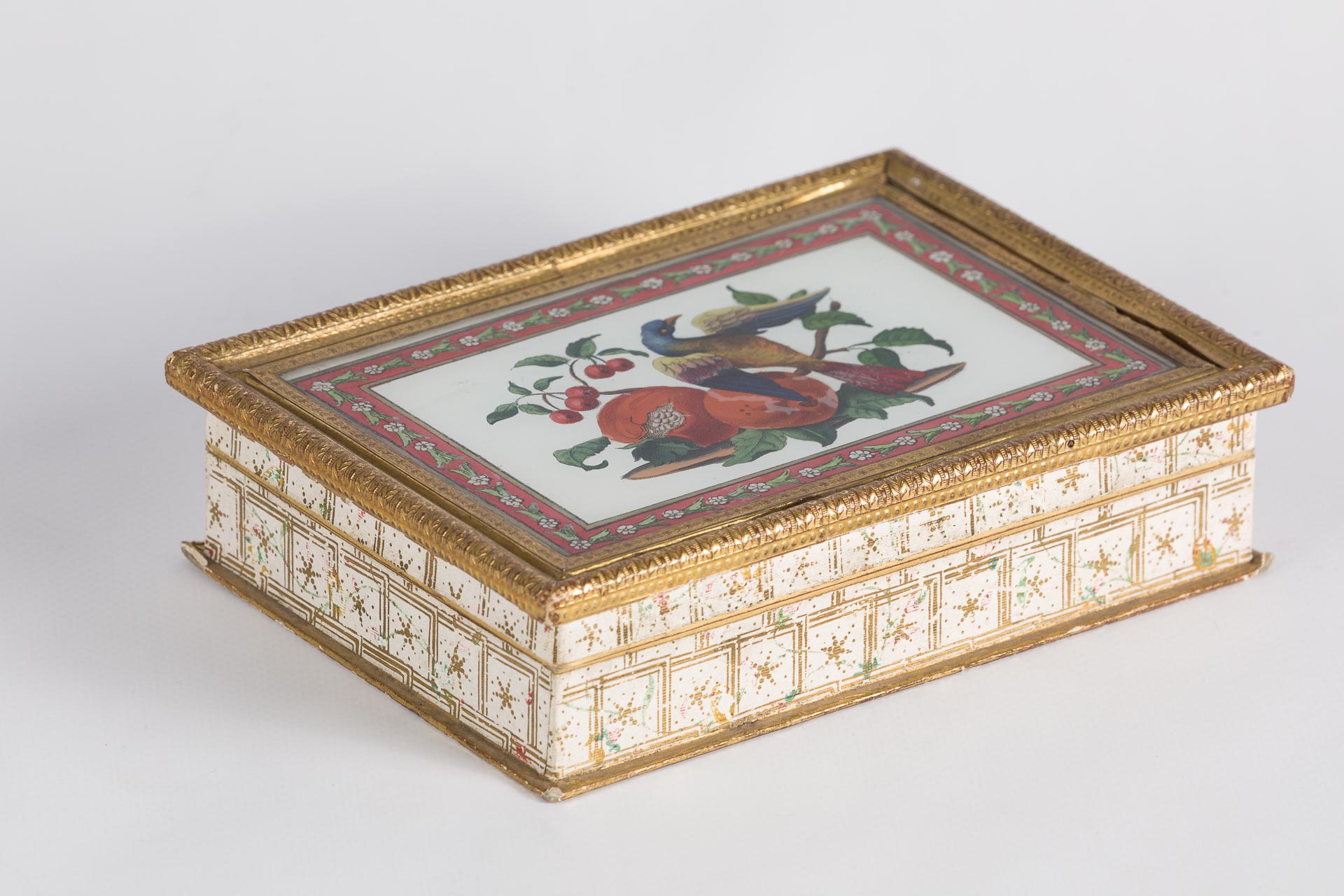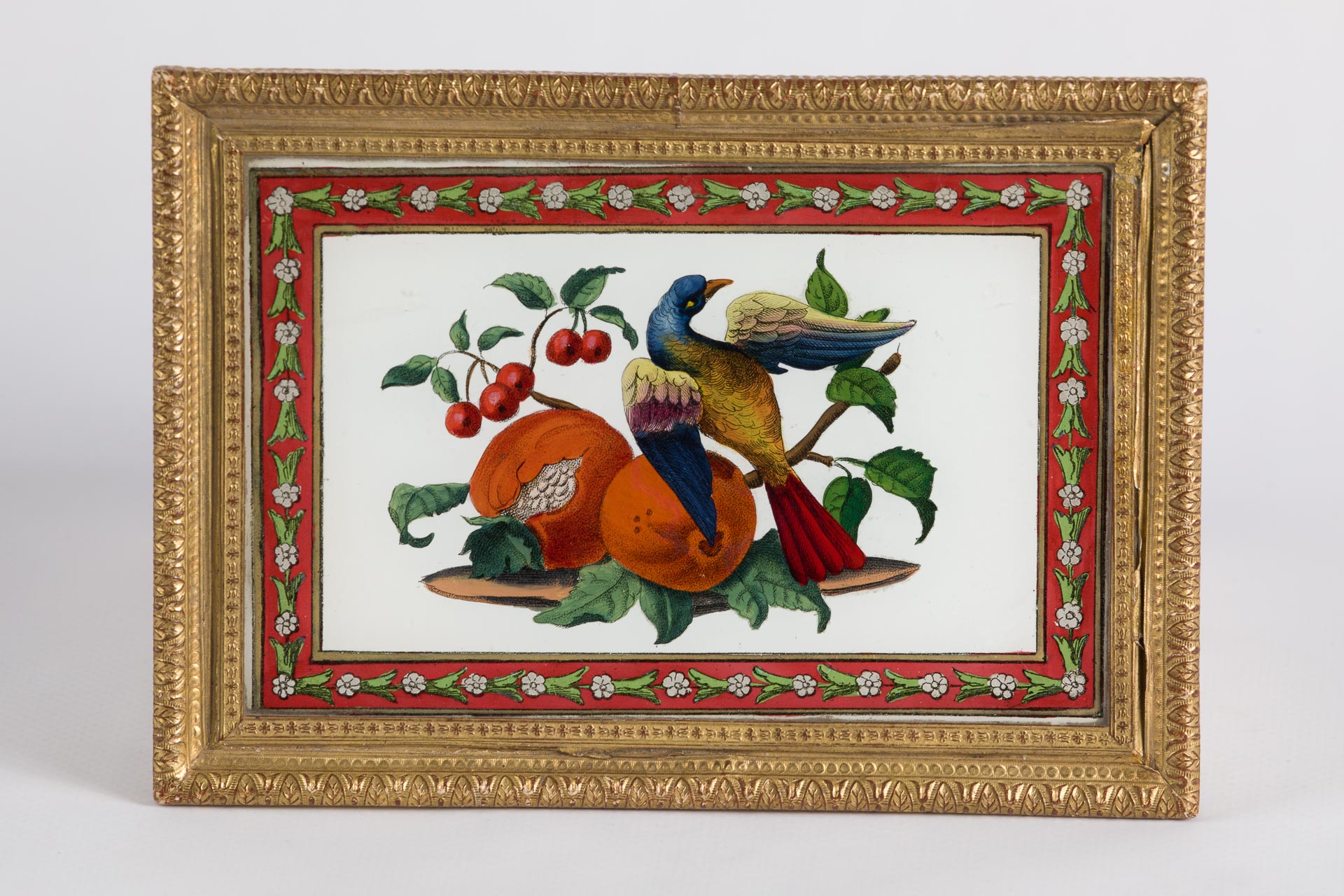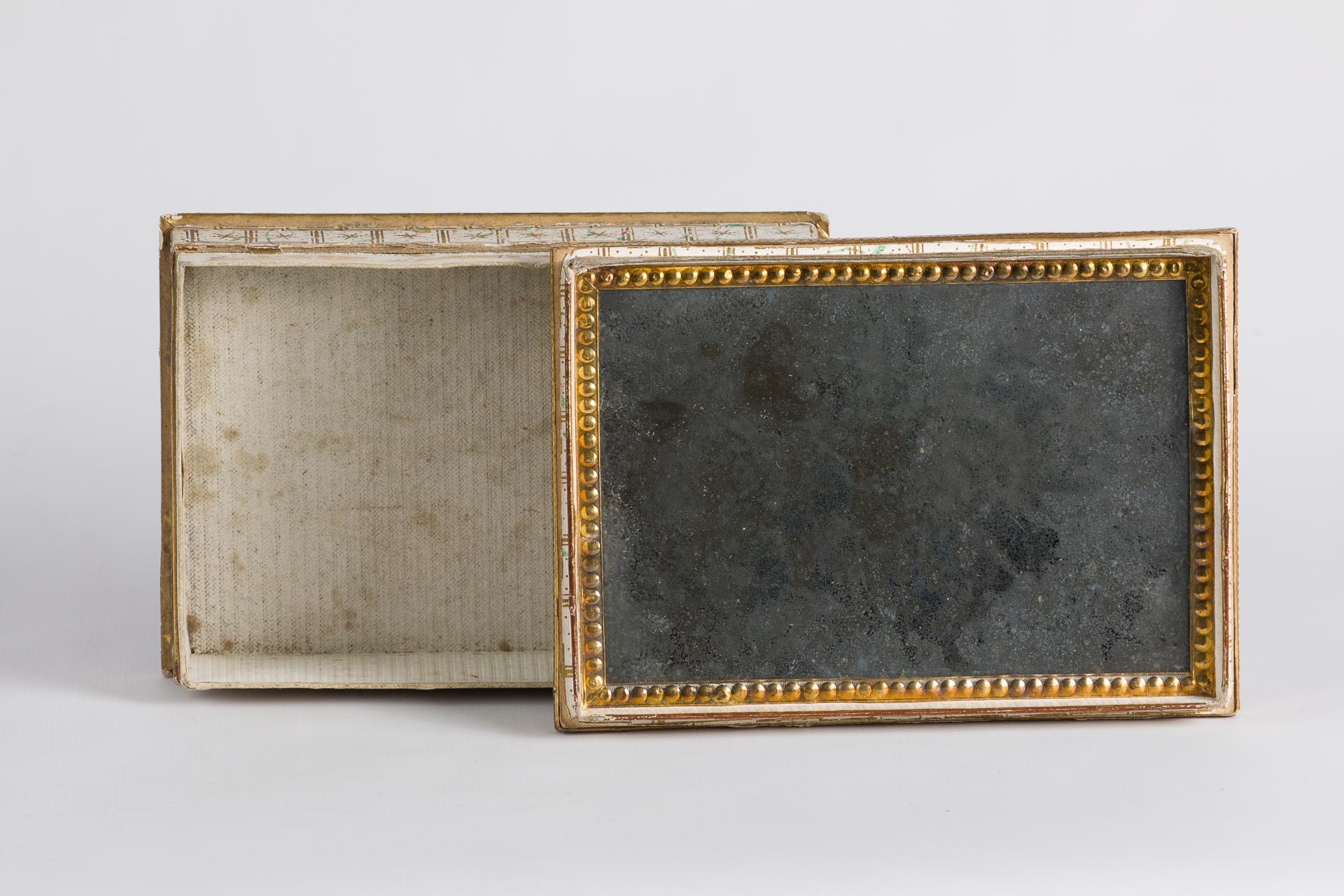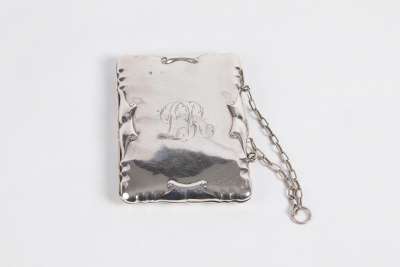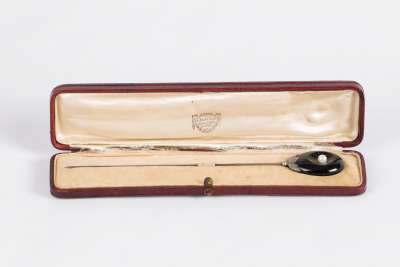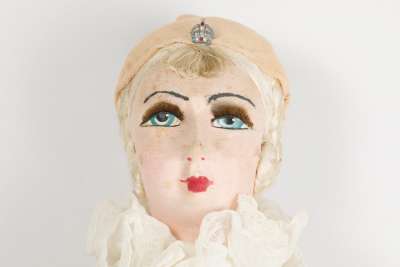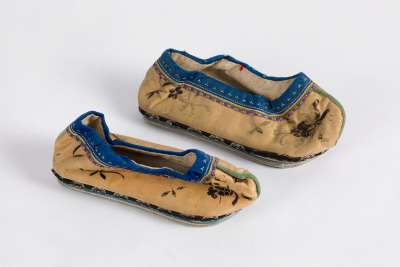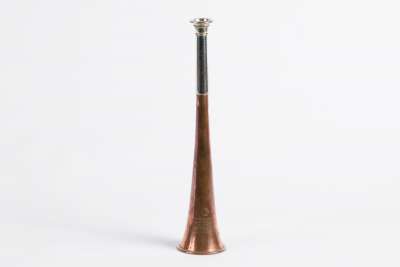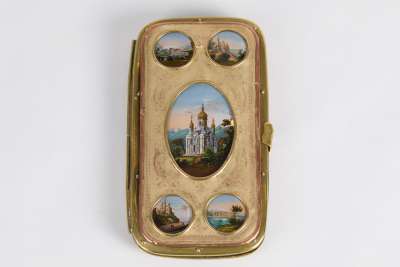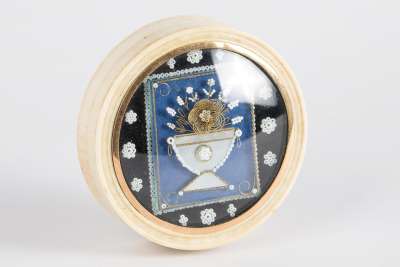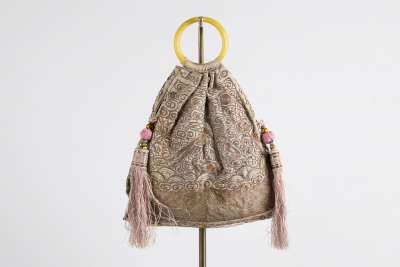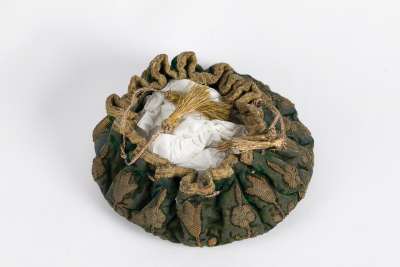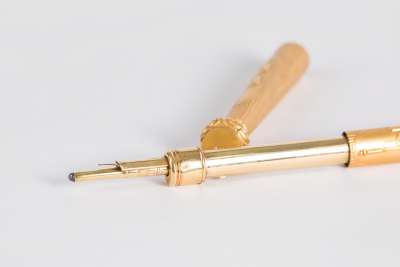This French Confectionery Box, dating from circa 1830-40, is an exquisite example of early 19th-century craftsmanship. Originating from France, this square cardboard box features a reverse-painted lid with intricate floral decorations. The box is adorned with luxurious Dresden trims, providing a touch of elegance and sophistication. Inside, a mirror adds an unexpected element of function and beauty. This antique is not only a piece of history but also a testament to the meticulous artistry of its maker.
Condition Report
The French Confectionery Box is in a condition consistent with its age and historical use. The cardboard material shows some signs of wear, which is expected for an item of its age, adding to its authenticity and charm. The reverse-painted floral lid retains much of its original vibrancy, though minor fading is present. The Dresden trims have been well preserved, with only minimal tarnishing noted. The mirror inside the box is intact, though it exhibits some small spots typical of antique mirrors. Overall, the box is in good condition for a piece from the early 19th century.
Dimensions
Weight: 230gm, Length: 16.9cm, Width: 11.9cm, Height: 4.3cm.
A Decorative Storage Solution
This confectionery box was originally designed to store and present sweets and confections, reflecting the opulent lifestyles of the French bourgeoisie. Such boxes were often used to impress guests with their contents and the decorative artistry of the box itself during social gatherings. The addition of a mirror and decorative trims suggests it may have also served as a multifunctional piece, perhaps doubling as a small vanity accessory when not in use for storing confectionery.
Emblematic of 19th Century French Decorative Arts
The design and craftsmanship of this confectionery box are emblematic of the 19th-century French decorative arts. Known for their attention to detail and use of luxurious materials, French artisans during this period excelled in creating items that were both beautiful and functional. The Dresden trims and reverse-painted floral designs are characteristic of the era, showcasing the intricate detailing and high-quality craftsmanship that were hallmarks of French decorative pieces at the time. This box serves as a fine representation of the artistic trends and tastes that prevailed in early 19th-century France.
The Craft of Cardboard and Dresden Trim Application
The creation of this confectionery box involved the delicate art of cardboard construction combined with the application of Dresden trims. Cardboard was a popular material in the 19th century for creating lightweight yet durable storage solutions. The reverse-painting technique used on the lid involves applying paint to the underside of a glass surface, a method that requires precision and skill. The Dresden trims, often made from embossed and gilded paper, were meticulously applied to enhance the visual appeal of the box. This combination of materials and techniques highlights the innovative approach of French artisans during this period.
Makers of French Confectionery Boxes
While the specific maker of this box remains unknown, it is representative of the work produced by skilled artisans in France during the 1830s and 1840s. These craftsmen were renowned for their ability to blend practicality with elegance, creating items that were both utilitarian and decorative. The anonymous nature of many such pieces adds to their intrigue and appeal, as they encapsulate the collaborative spirit of the era’s workshops where multiple artisans might contribute to a single piece. This confectionery box exemplifies the high standards and artistic flair typical of the period’s production.
Sought After by Collectors of French Antiques
Collectors of French antiques are often drawn to confectionery boxes like this one for their historical significance and decorative appeal. Such items provide a tangible connection to the past, offering insights into the daily lives and social customs of the time. The blend of artistry and utility found in these boxes makes them highly desirable among collectors who appreciate the craftsmanship and design ethos of the early 19th century. The survival of such pieces over nearly two centuries speaks to their enduring charm and the quality of their construction.
